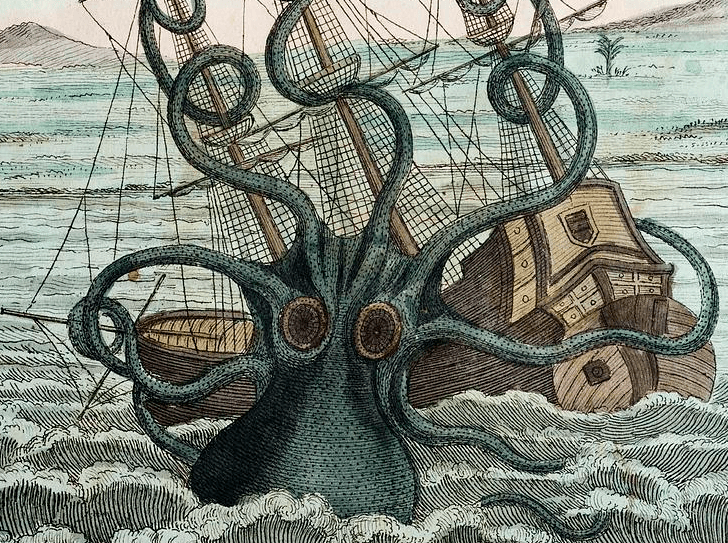USOs Not UFOs Have Been the Greatest Threat to the Navy – USNI News

The United States Navy created a bit of a buzz when it revealed new guidelines for pilots who wanted to report encounters with unexplained aerial phenomena. The guidelines were created in response to a rash of unusual sightings over the past several years. Many media outlets equated unexplained aerial phenomena to unidentified flying objects, or UFOs, which in turn was interpreted by a lot of people as meaning “spacecraft flown by aliens.” To the disappointment of believers, most reported phenomena are probably due to something a bit more mundane than extraterrestrials taking a joy ride through our atmosphere. In addition to spotting experimental aircraft being tested, aviators may simply be succumbing to optical illusions or experiencing radar glitches. To date, there has been no documented damage to a plane caused by a UFO.
However, it has been mysterious creatures from inner space rather than outer space that have posed an actual threat to the Navy. As long as there have been sailors there have been tales of sea monsters lurking in the depths that could snatch crewmen and crush ships. There are an unknown amount of animals in the ocean that have yet to be identified. Recent discoveries such as the humpback angler fish and the ninja lanternshark demonstrate that there are still plenty of things in the oceans that can fuel nightmares. It is also true that USOs (unidentified submerged objects) not UFOs have presented the Navy with the greatest hazard.
In 1978, the USS Stein (DE-1065) was experiencing increased sonar noise which was interfering with operations. Upon inspection, it was found that the protective NOFOUL rubber-like coating on the sonar dome had several cuts and scratches. Within the cuts were the remnants of claws. These claws were the type found in the suction cups on the tentacles of the giant squid. Alarmingly, the only specimens of claws that previously had been collected by scientists were a fraction of the size of those recovered from the Stein. If it was a giant squid that attacked the destroyer escort, it was substantially larger than any cephalopod that had been documented. Old seafarers would probably claim that the Stein had somehow managed to escape the legendary Kraken.
In another incident in 1976, a torpedo recovery boat conducting oceanographic research was dragging a cargo parachute as a sea anchor when it snagged something. The crew did not know what had become entangled in the parachute, but it was very powerful and the ship struggled against it. Fighting the full power of the ship’s winch, the sea beast apparently suffocated when it swallowed part of the chute. The crew pulled aboard the bizarre creature that was 15 feet in length and weighed 750 pounds. They did not realize it but they had caught the never-before-seen megamouth shark. The megamouth shark remains elusive, with only about 100 sightings since the Navy’s inadvertent duel with the first one.
In the April 1955 issue of Proceedings magazine, Commander Vining A. Sherman wrote about when he was called to the bridge of the USS Hale (DD-642) to look at something caught on the destroyer’s ramming stem. There he saw “a monster of such gigantic size” that he was stunned. The beast had been split in two, and he estimated that 40 feet of the body was being dragged down the port side of the ship while another 12 feet of the body was hanging from the starboard side. It appeared to be a shark, but Sherman had never seen one that was over 50 feet in length. He ordered the ship to back clear of the monstrous creature because he was concerned that it would become lodged in the ship’s screws. As the ship freed itself from the impaled body, Sherman took a closer look. Besides being so large that Sherman thought he could easily sit in its mouth, the beast had features different from any shark he had ever encountered. He thought it must be from another world or a survivor from another age. Upon returning to port he continued to conduct research and concluded that it was a whale shark. Sighting of whale sharks at the time were extremely rare. Sherman stated that he spoke to many sailors and fisherman who had heard legends about the whale shark but had never seen one.
This article has been archived for your research. Find the original article here.


